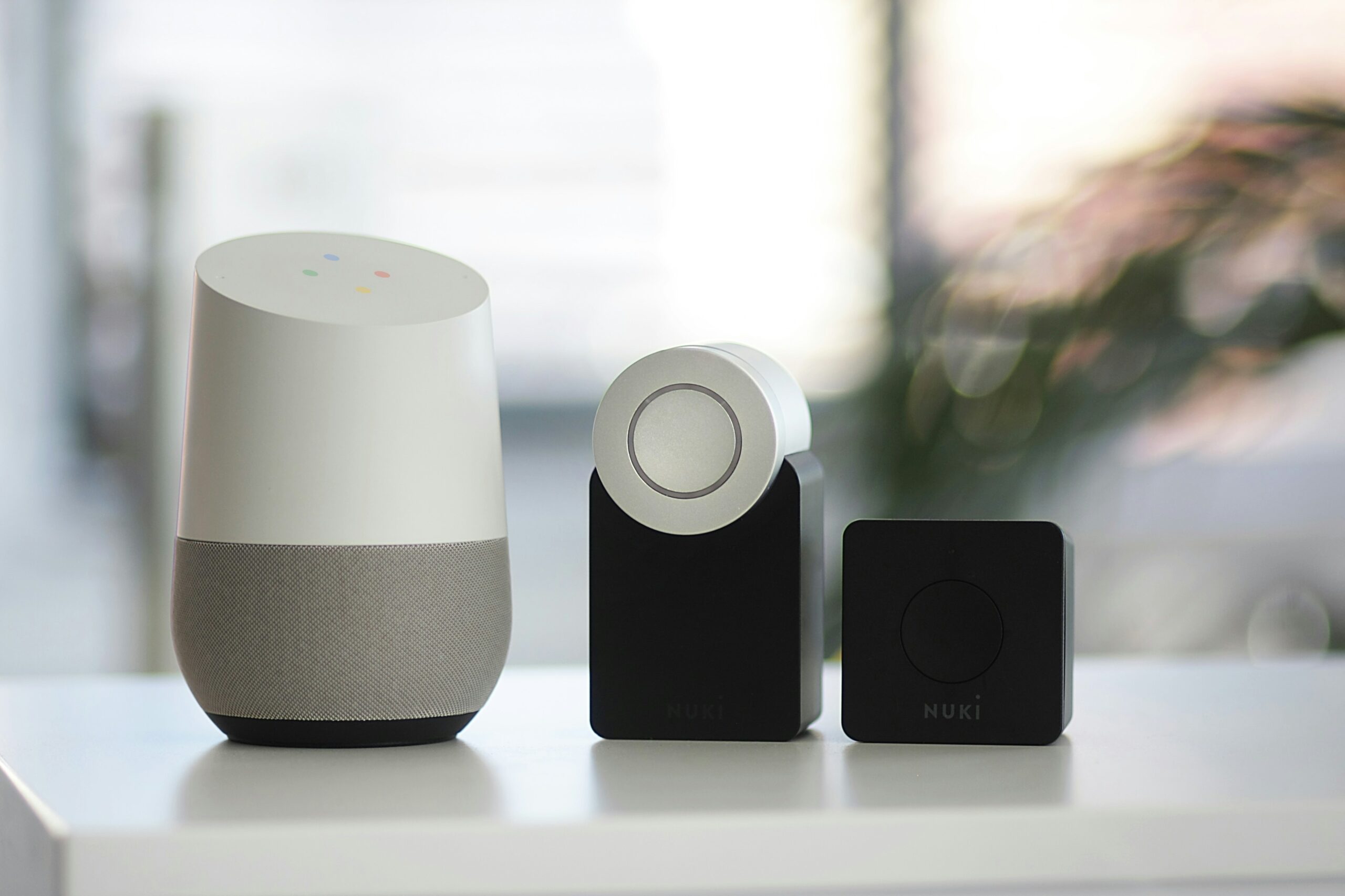By Brittany Chiu

The marketing world is undergoing a powerful shift as voice technology moves into the mainstream. With smart speakers present in nearly three-quarters of American homes and voice assistants integrated into everything from smartphones to cars, brands must rethink how they engage with audiences in this evolving sound-first landscape.
The Voice Revolution: By the Numbers
Voice technology has officially moved beyond early adoption. Experts project that by 2025, nearly 75% of U.S. households will have at least one smart speaker. On a global scale, over 8 billion voice-enabled devices are expected to be in use—outnumbering the world’s population. Meanwhile, Americans are increasingly using voice assistants in their daily lives, with more than 38 million people relying on them to shop, search, and simplify tasks.
Monthly voice search activity now exceeds a billion queries worldwide, driven by the convenience of speaking naturally rather than typing. And while some early forecasts predicted that 50% of all searches would be voice-based by 2025, more recent data suggests that figure is lower—though still significant and growing. Voice is no longer niche. It’s a foundational element of how people interact with technology and should play a role in your marketing strategy.
Voice Search Is Changing SEO Forever
People don’t talk the way they type, and that’s exactly why voice search is redefining SEO. Instead of punching in keywords like “best pizza NYC,” people are asking full, conversational questions like, “Where’s the best place to get deep-dish pizza near me right now?” This shift means that traditional keyword-focused SEO strategies are no longer enough.
Marketers must think like their customers speak. Content needs to be structured to answer natural questions directly—especially those beginning with “who,” “what,” “when,” “where,” and “how.” Creating FAQ-style pages, optimizing for long-tail keywords, and using structured data to help voice assistants find answers are all essential moves. Local search is especially critical. Most voice searches have strong local intent, and businesses that maintain accurate location data, store hours, and contact info are more likely to surface in voice results.
Audio Advertising and Voice Commerce
As streaming and podcast listenership continues to rise, so does the opportunity for voice-enabled, interactive audio ads. U.S. digital audio advertising is projected to reach $7.5 billion in 2025, driven by a combination of dynamic ad insertion, smarter personalization, and consumer receptiveness to audio content. Podcast advertising alone is seeing over 30% year-over-year growth. But what makes the new wave of audio ads stand out isn’t just where they play—it’s how they behave. Instead of passive listening, voice-enabled audio ads invite participation. Listeners can respond with a simple phrase, open a companion app, or even make a purchase directly through the ad experience.
Personalization is also key. By tapping into listening habits and behavioral data, brands can deliver more relevant messages at the right moments, improving recall and ROI.
Voice commerce—often called v-commerce—is also changing how consumers discover and buy products. While forecasts vary, most experts agree that voice-driven purchases are rising fast, particularly among Millennials and Gen Z. Shoppers are drawn to the speed and convenience of saying, “Order my usual shampoo,” or “Buy batteries from Amazon.”
This shift is already influencing how e-commerce platforms evolve. Retailers are developing voice apps (or “skills”) for smart assistants, streamlining checkout processes, and designing product discovery flows that feel natural in a spoken conversation. Brands that want to compete in this space need to build seamless voice experiences—from voice-friendly navigation to secure, frictionless payment options.

What Marketers Should Do Next
Start by building a strong foundation for voice engagement. Audit your content for conversational SEO by identifying opportunities to answer real customer questions in plain, natural language. Make sure your local business listings are complete and accurate—especially since voice search is often used to find nearby services. Next, explore interactive audio advertising: start small with podcast sponsorships or experiment with dynamic formats through programmatic audio networks. Use A/B testing to refine your approach and measure listener engagement. Finally, assess your e-commerce setup. Is your site optimized for voice navigation? Are there touchpoints—like customer support or checkout—that could benefit from voice integration? Even small adjustments, such as using clearer product naming conventions, can improve how your listings appear in voice search results.
As you develop your voice strategy, it’s also essential to consider who you’re speaking to—and how they speak. In today’s multicultural, multilingual landscape, voice marketing must be inclusive by design. That starts with language.
Language Inclusivity Is a Must
-
Over 67 million U.S. residents speak a language other than English at home.
-
AI-powered voice assistants (e.g., Alexa, Google Assistant, Siri) support multiple languages and bilingual functionality.
-
Multilingual voice support helps brands connect with diverse audiences more authentically.
-
Brands that do not account for language diversity risk excluding large consumer segments.
Conversational Language Must Reflect Culture
-
Voice search uses natural, full-sentence queries instead of keyword fragments.
-
Example: “Where’s the best Korean BBQ near me now?” vs. “Korean BBQ Los Angeles.”
-
-
Cultural differences in phrasing, politeness levels, and idiomatic language affect how people speak to voice assistants.
-
Direct translation is not sufficient; cultural adaptation (transcreation) is essential.
-
Content should feel natural, intuitive, and culturally resonant.
Multilingual Audio Ads and Voice Commerce
-
Most voice-enabled ads and e-commerce features currently target English-speaking users.
-
Significant opportunity to create localized, interactive voice ads in Spanish, Chinese, Tagalog, Korean, and more.
-
Voice commerce experiences should support product search and purchase in multiple languages.
-
Example: “Añade leche a mi lista” (“Add milk to my list”) in Spanish.
-
-
Multilingual voice functionality can boost both reach and user satisfaction.
Brand Personality Should Translate Across Languages
-
Voice interactions should consistently reflect brand tone and values across all supported languages.
-
Humor, emotion, and brand identity elements must be adapted to align with cultural expectations.
-
Poorly translated or culturally mismatched voice content can damage brand perception.
Accessibility and Inclusion
-
Voice interfaces can reduce barriers for non-English speakers and low-literacy users.
-
Thoughtfully designed multilingual voice experiences increase accessibility and equity.
-
Brands can play a key role in making digital tools more inclusive for underserved populations.
Voice is no longer just a feature—it’s a channel. And like any good marketing channel, it requires consistency, creativity, and strategy. Brands that succeed in voice will be the ones that treat it as a key part of the customer journey, not just a tech add-on. This means ensuring your voice experiences reflect your brand personality. It means being present on the platforms your audience is using—whether that’s Alexa, Google Assistant, Siri, or something new. It means continually optimizing based on what your audience responds to. In 2025 and beyond, voice-enabled marketing will separate the brands that merely keep up from those that lead.
References
- IAB, U.S. Digital Audio Advertising Revenue Report, 2024-2025. https://www.iab.com/news/voice-technology-advertising/
- DemandSage, Voice Search Statistics, 2025. https://www.demandsage.com/voice-search-statistics/
- Think with Google, Voice Search Trends, 2024. https://www.thinkwithgoogle.com/consumer-insights/voice-search-trends/
- BrightLocal, Voice Search for Local Business Report, 2025. https://www.brightlocal.com/learn/voice-search-statistics/
- Magellan AI, Podcast Advertising Report, 2025. https://www.magellan.ai/reports
- AdWeek, Digital Audio Advertising Trends, 2024. https://www.adweek.com/partner-articles/digital-audio-advertising-blazes-a-path-to-greater-engagement/
